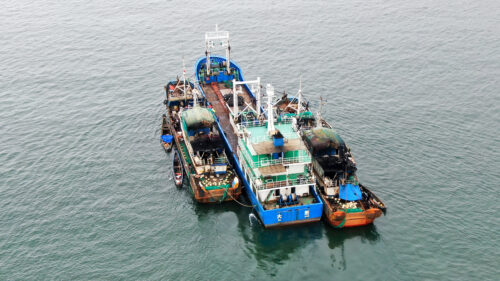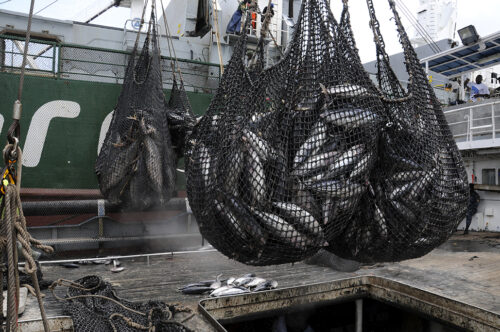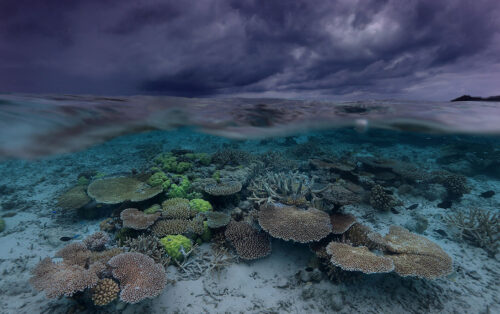As the FAO and its Member States develop voluntary measures on transshipment, experience from the ground informs four key recommendations
This year, the Food and Agricultural Organization of the United Nations and its Member States will work to develop and endorse voluntary guidelines for the regulation, monitoring and control of transshipment.
Transshipment—the transfer of catch between vessels—plays a vital role in the commercial fishing industry. Each year thousands of fishing vessels offload fresh catch like tuna, crab, squid and small pelagic fish onto refrigerated cargo vessels called carriers, commonly referred to as “reefers,” which then take it to shore for processing. This allows fishers to avoid a costly and time-consuming trip back to port, and increases the freshness and value of their catch.

While transferring catch from one vessel to another may seem innocuous, it often takes place at sea or in areas of port that are difficult to access for fisheries inspectors—out of sight and reach of authorities. Limitations in effective monitoring and control allow unscrupulous operators to manipulate or omit data pertaining to their fishing practices and catches in an effort to gain financial advantage. This lack of transparency enables conditions that can lead to illegal, unreported and unregulated (IUU) fishing and facilitates the introduction of illegally sourced fish into the market. It also opens the door for other maritime crimes, such as the trafficking of weapons, drugs, and even people.
Insufficient data and inaccurate reporting of catch can lead to skewed stock assessments, which can impact conservation and management efforts across valuable fisheries. It can also impede traceability efforts, since illegally caught fish is often mixed with legal catch. Without adequate regulatory management, transshipment remains a major obstacle to ensuring legal fishing.

In a new joint report, Global Fishing Watch, the International Monitoring, Control and Surveillance Network, The Pew Charitable Trusts and Trygg Mat Tracking have showcased real-life examples of inadequately regulated, controlled and monitored transshipment activity related to IUU fishing. The co-authors use a combination of operational support experience, satellite technology, machine learning, and public authorization data to inform the report, which aims to provide contributions from the ground that can support experts and Member States through future negotiations, ensuring that the voluntary guidelines address the challenges faced by the sector and build upon existing management measures.
Using Global Fishing Watch’s carrier vessel portal in combination with vital first-hand experience from the provision of technical assistance to the monitoring, control and surveillance of transshipment operations carried out by States and regional fisheries management organizations, the co-authors have determined that, to be effective in their aims, the voluntary guidelines for the regulation, monitoring and control of transshipment must be robust, future-proof and operationally achievable. The guidelines must be adaptable to the different types of transshipment, and use data that is accessible to all.
To achieve these goals, we recommend the following steps:
—Key considerations of the in-depth study “Transshipment: a closer look” are fully reflected in the voluntary guidelines
—Existing regional measures on transshipment are reviewed in detail, considered and strengthened by the voluntary guidelines
—The use of existing technologies and tools that support comprehensive implementation of measures, and validation of reported information on transshipment is supported and recommended in the voluntary guidelines
—Timely publication of vessel identification, authorization, tracking data, and transshipment activity—including spatial and temporal details of each authorized event—is encouraged in the voluntary guidelines
Now, we need leadership from those engaged in the development of the voluntary guidelines to ensure that transshipment activities can continue to serve as a vital component of fisheries operations—while preventing abuse by those seeking to profit at the expense of the fisheries and fishers that feed us.
Read our latest report Enhanced Regulation, Monitoring and Control of Global Transshipment Activities that outlines a collection of cases that demonstrate a need for enhanced regulation, monitoring and control of transshipment activities.
Duncan Copeland is the executive director of Trygg Mat Tracking. Courtney Farthing is the international policy director at Global Fishing Watch.


